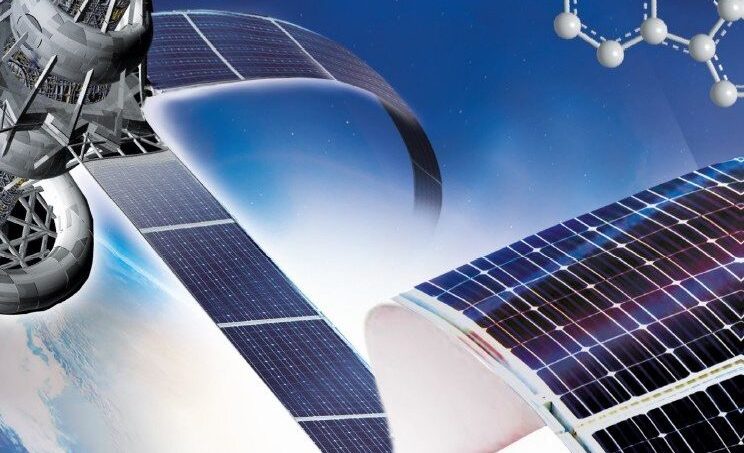A team led by the Skolkovo Institute of Science and Technology (Skoltech) in Moscow has demonstrated an organic solar cell able to withstand 6,000 gray units (Gy) of gamma radiation, an achievement the institute says is a record high.
The performance raises hopes the cell could power satellites in near-earth orbit, where the researchers theorized the device could deliver operational lifetimes well beyond 10 years.
The cells are described in the paper Impressive Radiation Stability of Organic Solar Cells Based on Fullerene Derivatives and Carbazole-Containing Conjugated Polymers, published in ACS Applied Materials & Interfaces. The devices are based on a blend of carbazole-based polymers and a fullerene derivative.
Testing showed a composite film of those materials maintained more than 80% of its initial conversion efficiency after exposure to a maximum absorbed dose of 6,500 Gy. The researchers noted, NASA estimates satellites in geocentric Earth orbit are exposed to an average annual radiation dose of 160 Gy, making the organic compound tested by the Skoltech team a strong candidate to operate effectively in such an environment for more than a decade.
Other pluses
The paper noted further advantages of using organic PV for satellite applications, including a high power to weight ratio, and flexibility. “Deploying space solar sails made of flexible plastic solar cells represents an enticing opportunity for ramping up the power of photoelectric converters on the satellites,” said Skoltech professor Pavel Troshin, who led the research group.
The same group recently evaluated a group of lead based perovskites for similar applications and found the cells quickly degraded under exposure to 5,000 Gy of radiation. A Chinese research group, meanwhile, discovered the lack of moisture in oxygen 35km from the Earth’s surface played to perovskite’s advantage.
Satellites requiring an energy source in space have mostly relied on III-V solar cells – so named because they incorporate elements from those groups of the periodic table. Alternative concepts such as organic PV and perovskites, however, potentially offer a much cheaper alternative.
This content is protected by copyright and may not be reused. If you want to cooperate with us and would like to reuse some of our content, please contact: editors@pv-magazine.com.




2 comments
By submitting this form you agree to pv magazine using your data for the purposes of publishing your comment.
Your personal data will only be disclosed or otherwise transmitted to third parties for the purposes of spam filtering or if this is necessary for technical maintenance of the website. Any other transfer to third parties will not take place unless this is justified on the basis of applicable data protection regulations or if pv magazine is legally obliged to do so.
You may revoke this consent at any time with effect for the future, in which case your personal data will be deleted immediately. Otherwise, your data will be deleted if pv magazine has processed your request or the purpose of data storage is fulfilled.
Further information on data privacy can be found in our Data Protection Policy.